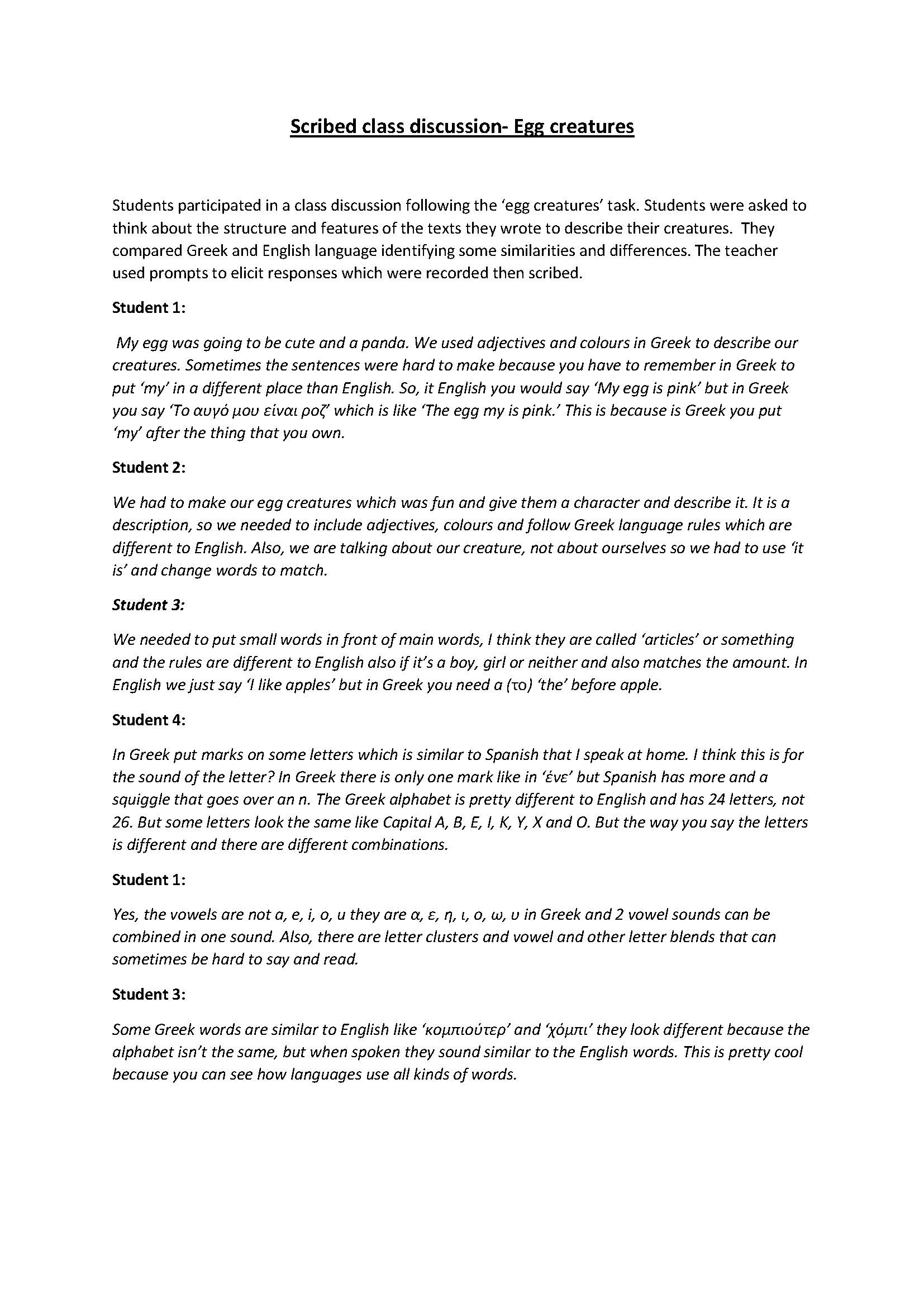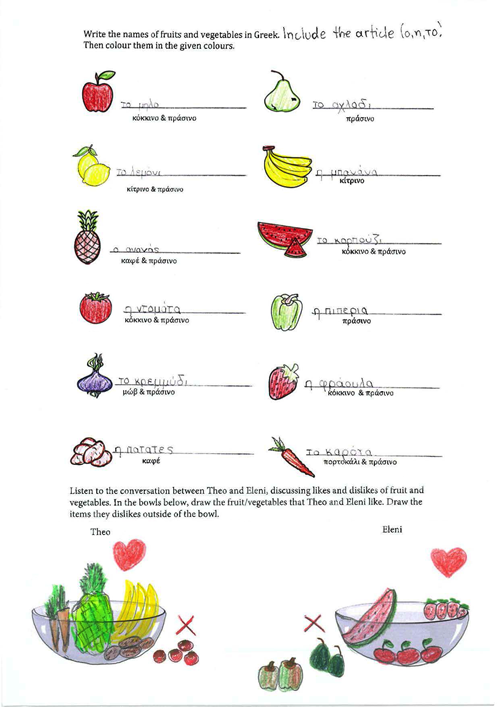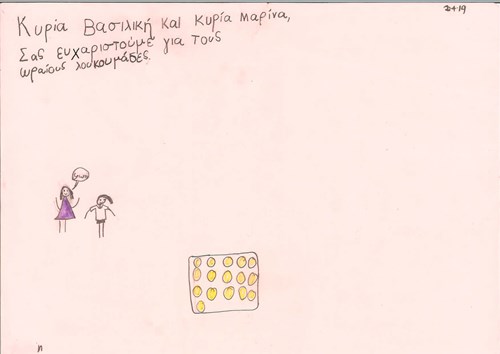By the end of Year 4, students interact with the teacher and peers to share simple information about aspects of their lives, such as school (for example, Mαθαίνω ελληνικά), home (for example, Το σπίτι μου είναι μεγάλο) and everyday routines (for example, Παίζω μπάλα). They use formulaic expressions when participating in classroom routines, collaborative activities and simple transactional exchanges, such as praising and encouraging others (for example, Μπράβο σου), asking for help, seeking clarification (for example, Συγγνώμη, κυρία), and requesting permission (for example, Μπορώ να πάω έξω;). They use features of Greek pronunciation when asking questions such as, Πού είναι; , and making statements and exclamations (for example, Ελάτε τώρα!), including use of the accent mark. Students locate information from spoken and written texts related to everyday contexts and routines such as, Να το βιβλίο μου, Τη Δευτέρα παίζω τένις, and use simple statements and support materials to present information about themselves (for example, Αγαπώ τη μουσική, Είμαι οχτώ χρονών), others (for example, Πόσων χρονών είσαι;), home (for example, Μένω στο ...) and school (for example, Να η τάξη μου). They respond to imaginative texts by discussing favourite elements, acting out events and making simple statements about characters. They perform and create short imaginative texts, using formulaic expressions and modelled language (for example, Πού είναι ο Φρίξος; Είναι …). Students use vocabulary related to school, home and everyday routines such as, η πόρτα, το σπίτι, το σχολείο, τα χόμπυ μου, η οικογένειά μου, and describe people, objects or events using adjectives and adverbs. They use appropriate word order, gender, and singular and plural forms in simple spοken and written texts (for example, Να η γάτα, Να ο γάτος, Να οι γάτες). They translate and interpret common words and frequently used language relating to familiar environments (for example, Oρίστε Μαρία, Παρακαλώ), and create simple bilingual resources for the classroom. They identify ways that their own language and the Greek language reflect ways of behaving as well as words.
Students write letters of the Greek alphabet, and identify sound–letter relationships, letter clusters, vowel–consonant combinations and the most common digraphs (for example, ου, αι, οι, ει, μπ, ντ). They identify the structure and linguistic features of texts used in familiar contexts, such as stories, songs, recipes and conversations (for example, Τέλος, Καλημέρα, Τι κάνεις;). They give examples of how language use varies according to the context and purpose of the exchange (for example, Γεια σου / σας). They identify ways that languages change over time, and how languages influence each other, providing examples of words in English that are borrowed from Greek and words in Greek that are borrowed from other languages. They compare Greek and English, identifying similarities and differences, particularly in vocabulary, behaviours and expressions related to cultural practices, such as special occasions.



